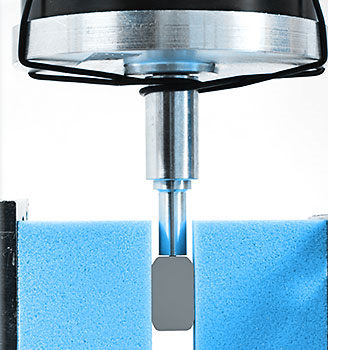Spinal implants
Expulsion Test - PI-52
Normative References (internal)
PI-52 (accredited procedure): Expulsion test - spinal implants
This test aims to determine the mechanical resistance of spinal implants against expulsion loads. This test can be used for lumbar and cervical cages and VBRs. Polyurethane blocks matching the outer shape of the implants are used to simulate the vertebras. An axial preload is applied, and the implant is pushed in a-p or p-a direction until a predefined motion occurs. Typically, six implants are tested.


